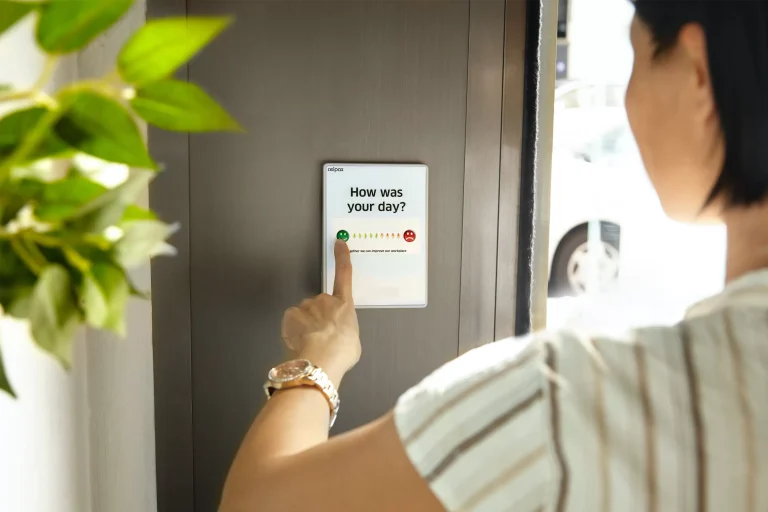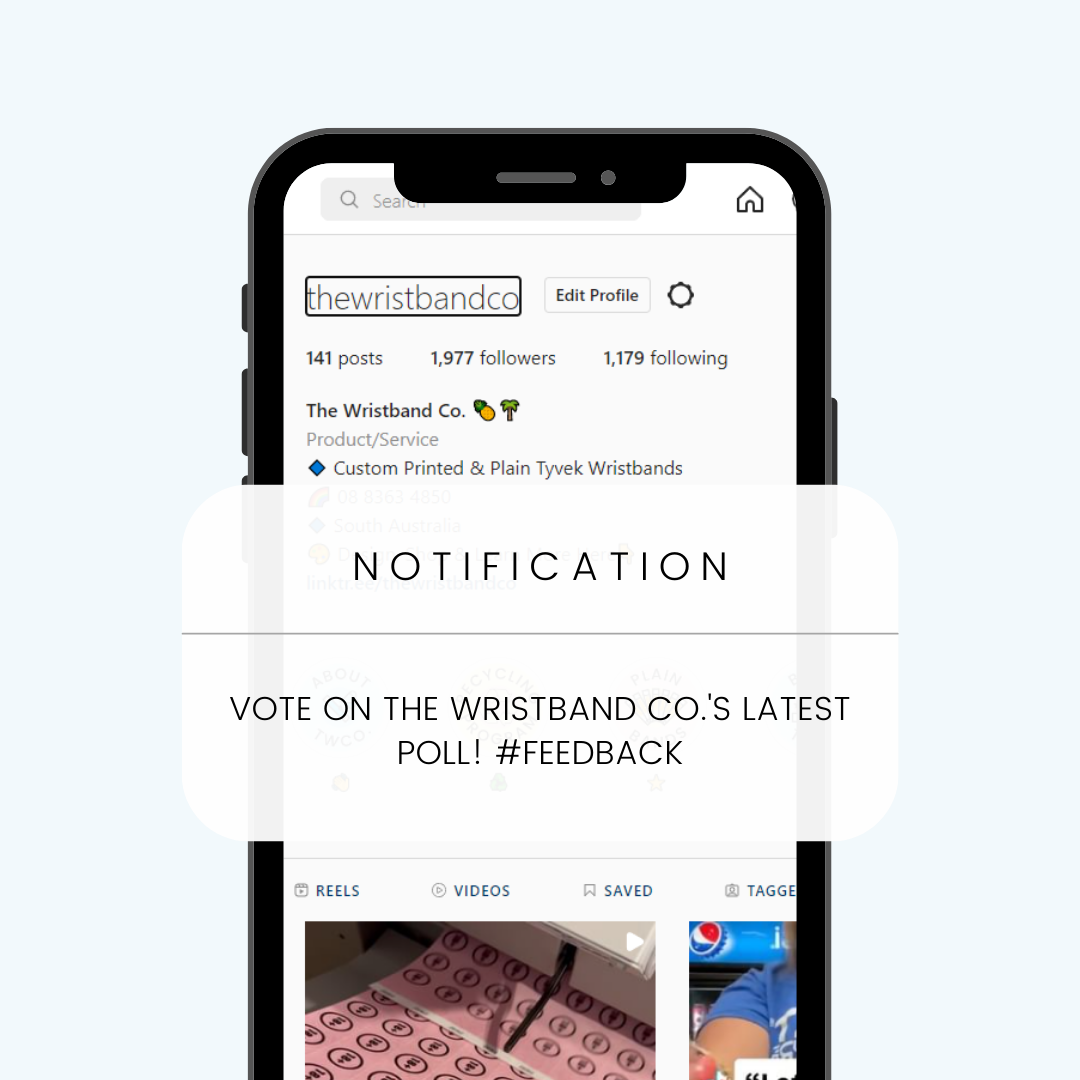- Free shipping on every order
- Same day dispatch
- Price beat guarantee
Menu
Blog How to Get Feedback from an Event: 6 Powerful Strategies

Top Six Ways To Collect Event Attendee Feedback
The relationships you build with your event attendees begin long before your event happens and should continue after your event finishes. And that relationship is built on communication. When collected effectively, event attendee feedback can be a powerful tool in making your current attendees feel valued and improve your future events for new and returning guests.
Here are six ways to collect robust and credible event attendee feedback.
1. Send Out A Survey
Online surveys allow you to reach a broad audience, often at a low cost. Using your online tools is a much better method than sending out “junk mail” paper feedback requests. At The Wristband Co., we strive to work as sustainably as possible and moving to an ever more digital platform is one way to reduce single-use items.
Sending surveys to your event attendees might seem simple, but a well-worded questionnaire can generate valuable content for your current and future events.
Depending on the type of event you are hosting, it might be appropriate to send out event surveys before, during, after or at multiple points in your event. We recommend using a professional tool to structure your questionnaire, keep the process simple for your attendees, and help build a robust survey for feedback.
There are several survey tools available for you, and we’d recommend:

2. Collect Feedback in Person
Speaking directly to your event attendees can generate powerful event feedback. As well as collecting first-hand event feedback, you can make your attendee feel highly valued and heard.
Verbal or in-person feedback can be very successful if you have disgruntled attendees. Although difficult to hear at the time, negative feedback can be extremely constructive in improving your future events. It is also better to garner this event feedback verbally than receive negative reviews in the public arena, e.g., on social media.
You can also elevate your feedback by using wristbands to create a VIP appearance for event attendees who have taken the time to provide feedback. For example, upon receiving an event attendee’s feedback, they would receive a custom wristband, elevating them to a higher level of access within the event.
3. Use Social Media
Encouraging event attendee feedback on social media can seem daunting. However, it can be an effective, efficient way of collecting data from your event attendees if used correctly.
Your social media audiences are also reassured when they see user-generated content such as reviews and event feedback. The approval from a well-placed review online can generate many more sales than a paid advertisement.
Some ways of collecting event attendee feedback on social media are to

4. SMS Feedback
If you have collected and are approved to use event attendees’ phone numbers, then asking for feedback via SMS can be a quick, efficient way of asking post-event survey questions. If you time your SMS correctly, event survey responses can come back to you in less than 5 minutes. SMS event surveys also have the flexibility to respond to an attendee in real-time – whether with an automated follow-up question or with a dedicated staff member.
You can create simple text surveys, send direct messages or encourage feedback as part of a promotion, all via SMS.
Collecting event feedback via SMS can work well if you are looking for short, simple answers, e.g. rate from 1 – 10, yes or no responses. However, if you are looking for long-form responses, you can also consider sending an SMS to your event attendees with a link to your event feedback form, e.g. a Google form.
5. Send Out An Email
Hopefully, you’ve captured your event attendees’ email addresses at this point – when they bought a ticket or other merchandise, for example. Now is the time to build your email relationship with your event attendees.
Sending out event feedback surveys via email increases the chance of receiving a response as the email lands directly in their inbox. You must ensure that the email is as appealing as possible to open, read, and click through the survey questions.
When sending out post-event surveys, make your email appear as personalised as possible, from using the recipients’ names in the heading to the type of images used in the mail, the language style and more.
As mentioned in the online event survey, using these digital event feedback tools are all great and sustainable methods of collecting event feedback. If you are interested in exploring hosting a more environmentally friendly event, have a look at how to run a more sustainable event in 2022.
6. Have a Dedicated Feedback Table
Having a feedback table or station during the event can be beneficial. By proactively chasing feedback from your event attendees, you can generate a lot of good feelings, showing you and your event care about what your attendees think.
It can also allow dissatisfied attendees to address the issue whilst at the event – and for you to fix it during the event. Again, this can generate a lot of goodwill with your attendees as you listen and adapt to their needs. It also reduces the likelihood of negative reviews or feedback on public domains – social media, trip advisor etc.
If you want to set up a feedback table, its placement is essential to its success. Think of placing it close to heavy – but flowing – foot traffic, so it is visible and easily findable. Putting it near an exit or the food and beverage stations can be logical. Another option would be to print a QR code onto Tyvek wristbands; once they are on your guest’s wrists, they can scan the QR code, which would direct them to the feedback table within your venue.

What To Do With It
Now you’ve collected your event attendee feedback, you need to do something with it! Analyse the feedback; whilst it might be easy to skim through it, take the time to look at it from a deeper perspective.
You can analyse your feedback by
By analysing your event feedback, you can highlight the successes and underline the failures to improve on for your next event. Feedback like this is also handy social proof to encourage future event attendees and investors.
Looking To Planning Your Next Event?
We regularly work with customers planning events of various sizes at The Wristband Co. We are pleased to assist you in any way we can, from small intimate parties to large-scale festivals, in finding the ideal wristbands for you. Get in touch with us today on 08 8363 4850 or email us; at [email protected].
Meet the Author

Laura Sayer – Marketing Specialist at The Wristband Co.


Join our mailing list to receive product information, endless inspiration and 10% off your next order!


Monday – Friday 8:30 AM-8:30 PM
Saturday 10:00 AM-5:00 PM
Sunday CLOSED
38 Little Rundle Street Kent Town SA 5067
08 8363 4850
ABN: 62 239 772 879
The Wristband Co. is located on the traditional lands for the Kaurna people, and we respect their spiritual relationship with their Country. We also acknowledge the Kaurna people as the custodians of the Adelaide region and that their cultural and heritage beliefs are still as important to the living Kaurna people today.
Payments Accepted